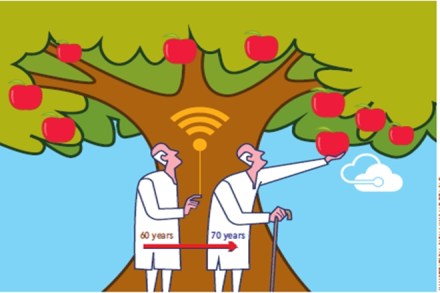In order to ensure transparency for subscribers of the National Pension System (NPS), the regulator has decided that the fees and settlement time for transactions at the level of the aggregators or payment gateways and the points-of-presence (PoP) should be specifically displayed by the PoPs on their website. This has been done so that subscribers can take informed decision.
Fixing online mode
In a circular, Pension Fund Regulatory and Development Authority (PFRDA) has mentioned that PoPs are utilising the services of aggregators or payment gateways such as SBI ePay, BillDesk, etc., for their online platforms for processing NPS contributions of subscribers. Various aggregators empaneled by the PoPs are charging different fees and also settling the transaction in different time-periods. “It is observed that there is no uniformity in fees levied and the settlement time across the aggregators or payment gateways being used by PoPs,” the circular notes. In fact, PoPs are the first point of interaction between voluntary subscribers and NPS. The PoPs perform activities such as subscriber registration, regular contribution uploading, subscriber servicing, MIS Uploading, etc. PoPs facilitate registration of subscribers for Tier I as well as Tier II account. Tier I account is a non withdrawable account to which the subscriber will contribute to build a retirement corpus. The Tier II account is a voluntary savings facility and subscribers can withdraw their savings from this account when they wish.
Also read| NPS can give you income tax benefit of over Rs 2 lakh; Here is how
Amendments to exit, withdrawals
The regulator has also amended the regulations on exits and withdrawals under NPS. In a Gazette notification last month, it has underlined that if a subscriber wants to continue and contribute in the NPS beyond the age of 60 years and up to 70 years, he can do so by giving in writing or any form specified by the regulator. Such option will have to be exercised within 15 days prior to attaining the age of 60 years or the age of superannuation.
In case of automatic or voluntary continuation beyond the age of 60 years, the subscriber can exit at any point of time from the NPS by submitting a request to NPS trust. However, the option of deferment of lump sum as well as annuity will not be permitted to such subscribers.
A pure defined contribution pension product, NPS was introduced in 2004 for government employees and, in 2009, was extended to all private sector employees. For, non-government employees, up to 75% of the contribution can be invested in equities and the rest between corporate and government debt paper. On turning 60, an investor can exit from the NPS but 40% of the pension wealth has to be utilised for purchase of an annuity.
Subscribers will have to pay the charges for central record-keeping agency, pension fund and trustee bank. For a normal
NPS account, a Tier II account can also continue till the age of 70 years provided the Tier I account continues beyond 60 years age of the subscriber. Contributions towards the Tier II account can be made using the PRAN and a subscriber can choose between equity funds, government securities and fixed income instruments. However, one does not get any tax benefit on the investment made in Tier II account as it does not have a locking period for funds which is there in case of
Tier 1 account
NPS got a big push in the 2015 Budget when the government allowed tax benefit on investment of up to `50,000 a year in NPS under Section 80CCD, which is over and above the benefit available on `1.5 lakh under Section 80C. The following year, the finance minister made withdrawals from NPS on maturity tax-free up to 40% of the total corpus accumulated. And last year, in order to bring in parity in tax treatment for all retirement products, the government made maturity withdrawals from NPS completely tax-free. A subscriber can partially withdraw up to 25% of contribution tax-free from NPS Tier I account for specified purposes.
